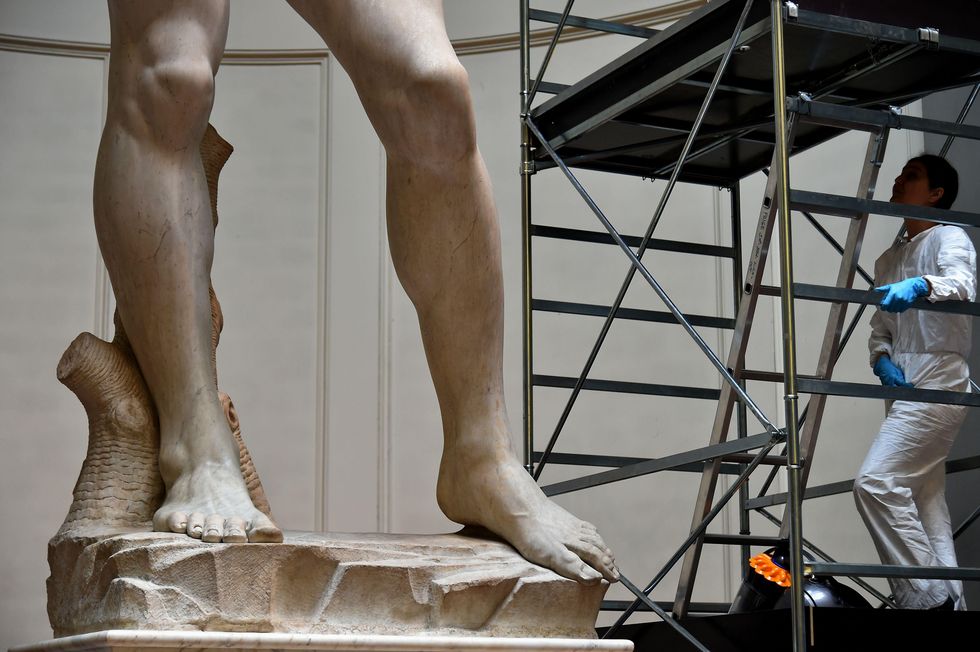Even though Michelangelo's David statue was moved inside 143 years ago to protect it from the elements, it's not the rain art enthusiasts are worried about — it's the cracks in the famous statue's ankles. Yikes. In 2014, Italian geoscientists mapped out the fractures and discovered the statue will likely snap if it's tilted even just 15 degrees.
The problem stems from an imperfection in the the statue's design: The center of gravity in the base doesn't align with the center of gravity of the figure, resulting in extra pressure on his narrowest part, the ankles. What will likely happen if the statue is tilted is the stress fractures (or cracks) will move higher up the leg until the marble breaks just below the knee.
But what would cause the statue to tilt? Tremors from things like construction or an earthquake.
Don't they look so sturdy though?
The New York Times Magazine gives a bit of historical background on how the cracks got there in the first place. You see, before David was moved inside, he was located outside for more than 300 years at a slight lean. People think the lean was the result of a storm in 1511 or (more likely) the ground shifting over time. Sure, this might not sound like much, but that means the ankles were supporting six tons of marble for hundreds of years.
But (rejoice!) there's a solution: While the cracks can't be fixed, there's an antiseismic base that could alleviate the stress on the ankles and keep it safe during tectonic disturbance. Italy's minister of culture said a base would be installed under the statue after an earthquake rocked Florence back in 2014, but this has yet to be done. We just hope they don't wait too long.














